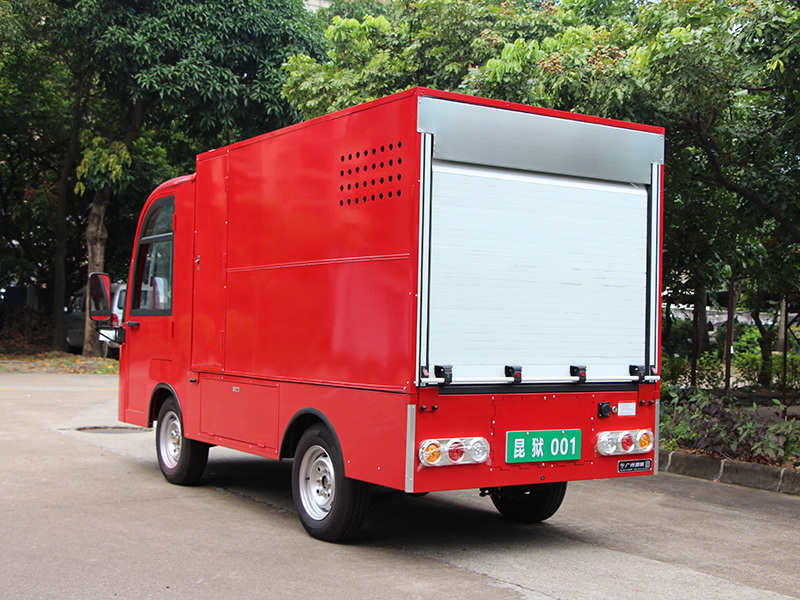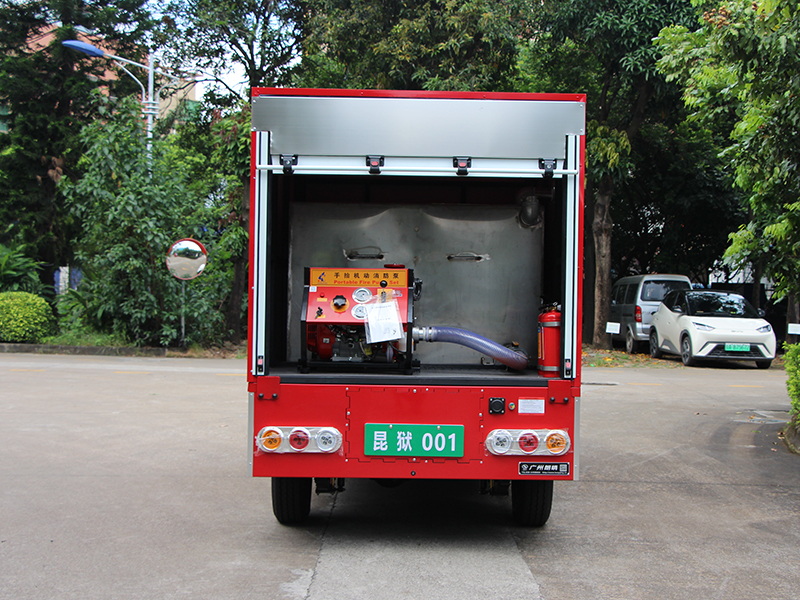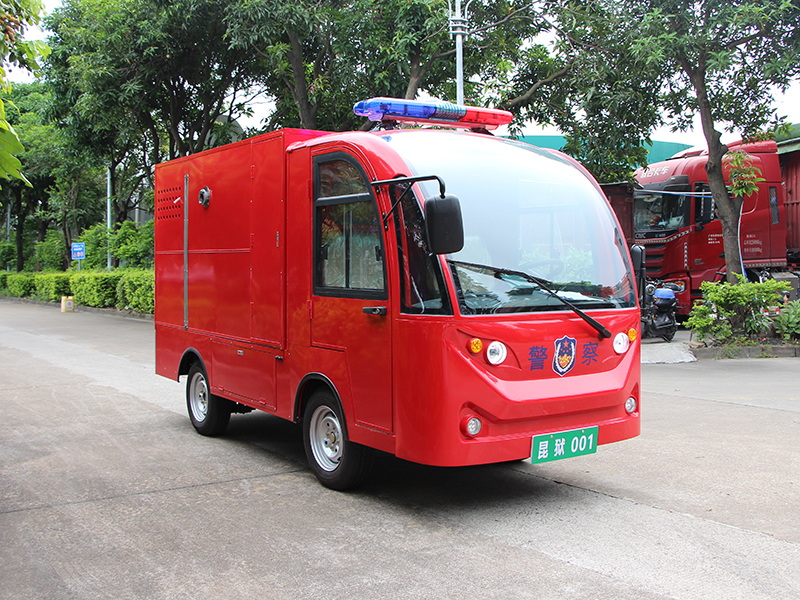Content Menu
● Understanding Electric Ambulance Carts
● Why Electric Ambulance Carts Are Gaining Popularity
>> Environmental Sustainability
>> Quieter Operation
>> Enhanced Maneuverability and Compact Design
>> Cost-Effectiveness and Operational Savings
>> Advanced Medical Equipment Integration
● Technological Innovations Driving the Trend
>> Battery and Charging Advancements
>> Autonomous and Smart Features
>> Integration with Smart City Initiatives
>> Training and Simulation for EMTs
● Real-World Applications and Success Stories
>> Hospitals
>> Urban Emergency Medical Services
>> Large Venues and Resorts
● Addressing the Challenges
>> Limited Driving Range
>> Charging Infrastructure
>> Initial Investment Costs
>> Public Perception and Acceptance
● The Future Outlook
● Conclusion
● Frequently Asked Questions (FAQ)
>> 1. What is an electric ambulance cart?
>> 2. How do electric ambulance carts improve emergency response times?
>> 3. What are the environmental benefits of electric ambulance carts?
>> 4. Are there limitations to using electric ambulance carts?
>> 5. How is technology enhancing electric ambulance carts?
Electric ambulance carts are rapidly emerging as a transformative force in modern healthcare. These innovative, battery-powered vehicles are redefining emergency medical transport by offering a sustainable, efficient, and patient-friendly alternative to traditional ambulances. Their growing popularity stems from a combination of environmental benefits, operational advantages, and adaptability to diverse healthcare environments. This comprehensive article explores the reasons behind the rise of electric ambulance carts, detailing their features, benefits, technological innovations, real-world applications, and challenges, culminating in a conclusion and a frequently asked questions (FAQ) section.

Understanding Electric Ambulance Carts
Electric ambulance carts are compact, electrically powered vehicles designed specifically for emergency medical transport in settings where traditional ambulances may be too large or inefficient. Unlike conventional ambulances, these carts are smaller, quieter, and highly maneuverable, making them ideal for hospitals, crowded urban areas, large event venues, resorts, and other confined spaces. Despite their size, electric ambulance carts are equipped with essential medical equipment and life-support systems, enabling emergency medical technicians (EMTs) to provide critical care during patient transport.
Why Electric Ambulance Carts Are Gaining Popularity
Environmental Sustainability
One of the foremost reasons electric ambulance carts are trending is their environmentally friendly operation. These vehicles produce zero tailpipe emissions, dramatically reducing air pollution in hospitals, urban centers, and other sensitive environments. This aligns with global initiatives to combat climate change and improve public health by minimizing carbon footprints within healthcare operations.
Quieter Operation
Electric ambulance carts operate with minimal noise compared to traditional combustion-engine ambulances. The quiet electric motors reduce noise pollution, which is particularly important in hospital settings and residential neighborhoods. This quieter environment helps lower patient stress and allows medical staff to communicate more effectively during transport.
Enhanced Maneuverability and Compact Design
Thanks to their compact size and agile design, electric ambulance carts can navigate narrow corridors, congested streets, and crowded venues where full-sized ambulances might struggle. This enhanced maneuverability leads to faster response times and more efficient patient transport within complex or crowded environments.
Cost-Effectiveness and Operational Savings
Electric ambulance carts offer long-term cost savings. They have fewer moving parts than combustion-engine vehicles, which results in lower maintenance needs and less downtime. Additionally, electricity is generally less expensive than gasoline or diesel fuel, reducing operational costs for hospitals and emergency services.
Advanced Medical Equipment Integration
Many electric ambulance carts are outfitted with critical medical equipment such as oxygen supplies, defibrillators, vital sign monitors, and secure storage for medications. Some models feature modular interiors that can be customized to meet the specific needs of different healthcare facilities or emergency scenarios, ensuring comprehensive patient care during transport.

Technological Innovations Driving the Trend
Battery and Charging Advancements
Recent breakthroughs in lithium-ion battery technology have significantly extended the operational range of electric ambulance carts, allowing them to operate throughout demanding shifts without frequent recharging. Fast-charging systems and sophisticated battery management software optimize charging times and battery longevity, ensuring these vehicles remain ready for emergency deployment with minimal downtime.
Autonomous and Smart Features
Some cutting-edge electric ambulance carts incorporate semi-autonomous driving capabilities and advanced driver assistance systems. These features enhance safety by providing collision avoidance, precise vehicle control, and smoother acceleration. Integration with GPS and telematics allows for real-time tracking, route optimization, and efficient fleet management, collectively improving emergency response effectiveness.
Integration with Smart City Initiatives
Electric ambulance carts are increasingly integrated into smart city infrastructures that utilize data analytics and intelligent traffic management to optimize emergency responses. Real-time communication between emergency vehicles and traffic systems can prioritize ambulance routes, reduce congestion delays, and improve patient outcomes. This networked approach enables strategic deployment of electric ambulance carts based on population density and emergency call patterns.
Training and Simulation for EMTs
The adoption of electric ambulance carts requires specialized training for EMTs, covering electric vehicle operation, battery management, and the use of advanced navigation and medical systems. Simulation-based training programs are being developed to prepare responders for the unique challenges of operating these vehicles in diverse environments.
Real-World Applications and Success Stories
Hospitals
Hospitals have been early adopters of electric ambulance carts, using them for internal patient transport and rapid response within large medical campuses. For instance, some Kenyan hospitals employ golf cart-style electric mini ambulances to reduce the physical strain on nurses and improve patient comfort while promoting sustainability. These carts facilitate quick movement between wards and diagnostic areas, enhancing overall hospital efficiency.
Urban Emergency Medical Services
In densely populated cities like London, electric ambulance carts complement full-sized electric ambulances by navigating congested streets and pedestrian zones. Their ability to access locations inaccessible to traditional ambulances helps reduce response times and comply with stringent environmental regulations.
Large Venues and Resorts
Electric ambulance carts are widely used in resorts, airports, sports arenas, and large event venues where rapid, quiet, and non-intrusive patient transport is essential. Their compact footprint and silent operation minimize disruption to guests and attendees while ensuring timely medical assistance.
Addressing the Challenges
Limited Driving Range
Although battery technology has improved, electric ambulance carts still face range limitations compared to fuel-powered vehicles. This restricts their use in long-distance emergency transport or in regions lacking charging infrastructure.
Charging Infrastructure
The availability of fast and reliable charging stations is critical to maintaining the operational readiness of electric ambulance carts. Healthcare facilities and emergency centers must invest in strategically located charging points to ensure vehicles are always mission-ready.
Initial Investment Costs
Electric ambulance carts often have higher upfront costs than traditional vehicles. However, these initial expenses are offset by lower operating and maintenance costs over the vehicle's lifespan, making them economically viable in the long term.
Public Perception and Acceptance
Community awareness and acceptance influence the successful integration of electric ambulance carts. Public education campaigns and demonstrations help build trust by highlighting environmental benefits, improved response times, and enhanced patient comfort.
The Future Outlook
The future of emergency medical services is poised to be transformed by electric ambulance carts and related technologies. As battery capacities increase and autonomous capabilities mature, these vehicles will become even more efficient and versatile. Integration with smart city systems will enable dynamic deployment and real-time coordination, further reducing response times and improving patient outcomes.
Moreover, the modular and customizable nature of electric ambulance carts allows healthcare providers to tailor vehicles to specific operational needs, from basic life support to advanced critical care transport. The growing emphasis on sustainability and green healthcare practices ensures that electric ambulance carts will continue to gain traction globally.
Conclusion
Electric ambulance carts are revolutionizing modern healthcare by providing a sustainable, cost-effective, and patient-centric solution for emergency medical transport. Their zero-emission operation, quiet performance, and superior maneuverability make them ideal for hospitals, urban EMS, and large venues. Technological advancements in battery systems, autonomous features, and smart city integration are overcoming current limitations and expanding their capabilities. While challenges such as charging infrastructure and initial costs remain, the long-term benefits for healthcare providers, patients, and the environment are compelling. As electric ambulance carts continue to evolve, they represent a critical step toward greener, more efficient, and responsive emergency medical services worldwide.

Frequently Asked Questions (FAQ)
1. What is an electric ambulance cart?
An electric ambulance cart is a compact, battery-powered emergency vehicle designed for patient transport and medical response in environments where traditional ambulances may be impractical. They offer zero emissions, quiet operation, and can be equipped with essential medical equipment.
2. How do electric ambulance carts improve emergency response times?
Their small size and maneuverability allow them to navigate crowded streets, narrow corridors, and complex venues faster than full-sized ambulances. Integration with GPS and smart city systems further optimizes routing and dispatch.
3. What are the environmental benefits of electric ambulance carts?
Electric ambulance carts produce no tailpipe emissions, reducing air pollution and carbon footprint. Their quiet operation also decreases noise pollution, improving the quality of life in urban and hospital environments.
4. Are there limitations to using electric ambulance carts?
Yes, their driving range is limited by battery capacity, and they require reliable charging infrastructure. Initial purchase costs can also be higher than conventional vehicles, though operational savings offset this over time.
5. How is technology enhancing electric ambulance carts?
Advancements include fast-charging batteries, semi-autonomous driving features, real-time telematics, and integration with smart city traffic systems. These technologies improve safety, efficiency, and patient care during emergency transport.










































